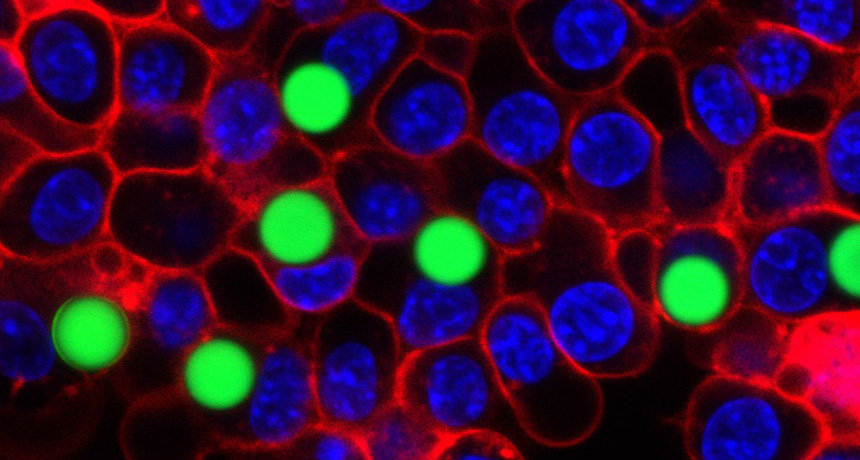
LASER TAGS Seven of the cells in this micrograph contain lasers in the form of plastic beads (green). The cells are enclosed in red; the nuclei are blue.
Matjaž Humar and Seok-Hyun Yun

LASER TAGS Seven of the cells in this micrograph contain lasers in the form of plastic beads (green). The cells are enclosed in red; the nuclei are blue.
Matjaž Humar and Seok-Hyun Yun